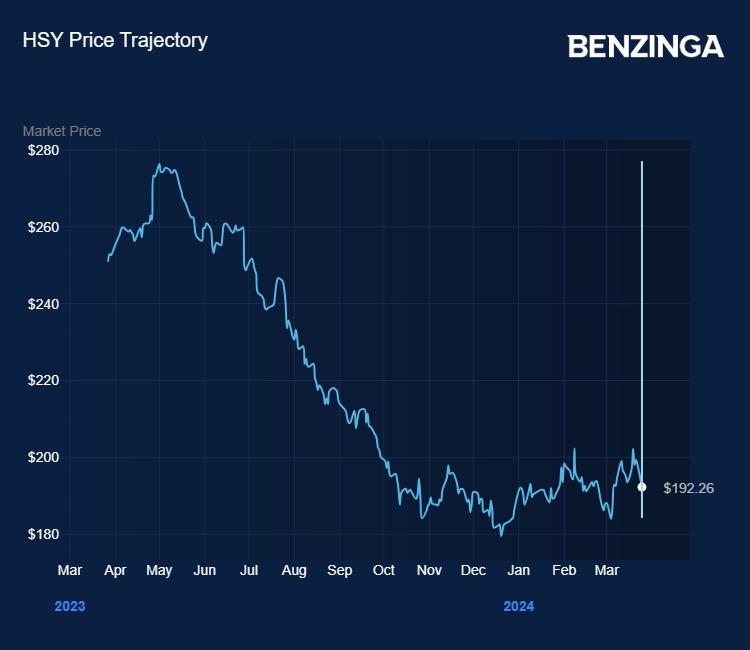The chocolate industry looks a bit hairy in the run-up to Easter — a particularly choc-heavy holiday.
What Happened: Cocoa broke through a milestone, pushing for the first time through the $10,000 per metric ton level.
That means, in just 50 days, the price of cocoa has doubled.
Candy producer Hershey Co (NYSE:HSY) has already said it expects historically high cocoa prices to limit earnings growth this year, but that was more than a month ago.
This is a rise even more meteoric than that of Nvidia Corporation (NASDAQ:NVDA), which added $1 trillion to its market cap in the first 67 days of 2024.
On Monday, Feb. 5, the beginning of the week of Hershey’s fourth-quarter earnings report, U.S. Cocoa Futures opened at $5,035 per metric ton (tonne). This was already a record high following seven consecutive sessions of gains, and the price was already up 24% since the start of the year.

Also Read: Is My Candy Bar Getting Smaller? Yes, A Chocolate Crisis Means Smaller, Pricier Hershey’s
Weather And Disease Hit Crops
“Recent heatwaves and extreme weather events in West Africa, where the vast majority of cocoa is produced, have severely impacted cocoa crops, leading to shortages and soaring prices,” said Simon Geale, at supply chain industry company Proxima, speaking to Confectionary Production.
“This is unwelcome news in the run-up to Easter,” he added, “as these challenges will inevitably trickle down to consumers. We’ve already witnessed chocolate makers increasing prices in response to rising cocoa costs. This year, consumers may notice smaller Easter eggs or a shift towards more premium-priced products on the shelves.”
Recent heatwaves and extreme weather, don’t explain it all, however.
West African crops have also been exposed to disease which makes them less productive. And these aren’t problems that can be dealt with simply by chucking on more pesticides.
West African cocoa farmers, from decades of profiteering by governments and commodity merchants, are also extremely poor. They’ve nothing left over from annual sales of their crops to reinvest in new plantings. And it is these aging cocoa plants that are more susceptible to disease and weather extremes.
Commodity analysts are now forecasting an ever-growing likelihood of a cocoa market deficit this year — meaning supply will be unable to meet demand.
Warren Patterson suspects a supply deficit of 374,000 tonnes, based on International Cocoa Organization data. “This would be higher than the deficit of 74,000 tonnes seen last year,” Patterson said.
Meanwhile, chocolate producers such as Hershey and Mondelez International Inc (NASDAQ:MDLZ) have issued warnings about the risk to their bottom lines. Shares in both companies have fallen slightly in the past three months.
Shrinkflation For Consumers
Consumer prices for chocolate products are rising and pack sizes are getting smaller — “shrinkflation” according to Bloomberg’s commodity columnist Javier Blas.
Blas posted on X on Monday: “In nominal terms, cocoa prices have surged to $10,000 — up from around $2,500 a year ago, and around $650 a decade ago. To put things into perspective: the previous record, which only fell in February after 46 years unbroken, was around $5,500.”
But putting things in further perspective, at least consumers aren’t dealing with levels seen during the 1970s — the days of oil crises and almost hyperinflation.
Blas noted: “In real terms, adjusted by the cumulative impact of inflation, cocoa is still trading well below the peak set in the 1970s. The record high established 46 years ago equals to $27,000 a ton in today’s money.”
Benzinga reached out to both Hershey and Mondelez for comment, but had received no reply at time of publish. We’ll update if comment is received.





